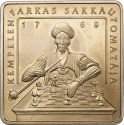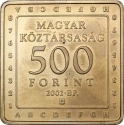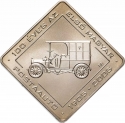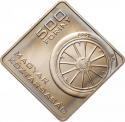You are about to finish your registration. Please check your mailbox (including spam folder). There should be a letter with a confirmation link. Check setting to make sure that your e-mail address is correct.
Send letter againDescription
Donát Bánki (1859-1922) was a Hungarian engineer and inventor, renowned for his collaboration with János Csonka in revolutionizing the automotive industry with the development of the carburetor for stationary engines.
Bánki left an indelible mark on various engineering domains, contributing significantly to the advancement of steam turbines, refrigeration technology, and agricultural machinery. A prolific inventor with numerous patents, his creations left a lasting imprint on Hungary's industrial and technological sectors and beyond.
Among his notable achievements is the co-invention, with János Csonka, of the Bánki–Csonka water turbine. This innovative turbine efficiently harnessed water flow to produce mechanical energy for milling, pumping, and electricity generation. Its simplicity and efficacy made it ideal for diverse applications, particularly in regions abundant with water resources, catalyzing the progress of hydroelectric power and facilitating the electrification of many areas.
Bánki's engineering breakthroughs played a pivotal role in modernizing industries and enhancing living standards by providing access to sustainable and reliable energy sources.
Engraver: Balázs Bitó
Obverse

|
Depicts the portrait of Donát Bánki. Above the portrait, the inscription "BÁNKI DONÁT" is visible. To the right, in horizontal rows beneath each other, the birth and death years "1859-1922," the inscriptions "THE BÁNKI-TYPE", "WATER TURBINE", and "INVENTOR" can be read. In the bottom right corner, the engraver's privy mark is located. BÁNKI DONÁT |
|---|---|
Reverse

|
Depicts the crossflow turbine. Positioned horizontally below the turbine depiction are the words "HUNGARIAN" and "REPUBLIC," with the denomination and the word "FORINT" appearing above them. Adjacent to the central design, aligned with the left edge, is the year of minting "2009," while the mint mark "BP." is situated parallel to the right edge. 1000 FORINT |
| Edge |
1000 Forint
Third Republic
Hungarian Explorers and Their Inventions
Water Turbine by Donát Bánki
Subscribe series
KM# 813 Adamo# EM221
Hungarian Explorers and Their Inventions
Water Turbine by Donát Bánki
Characteristics
| Type | Commemorative Issue (Non-circulating) |
| Material | Copper Nickel |
| Weight | 14 g |
| Diameter | - |
| Width | 28 mm |
| Height | 28 mm |
| Thickness | 2.1 mm |
| Shape |
|
| Alignment | Medal |
| Mint |
Budapest Mint (BP)
|
Related coins
Hungarian Explorers and Their Inventions
Hungarian Explorers and Their Inventions
Hungarian Explorers and Their Inventions







